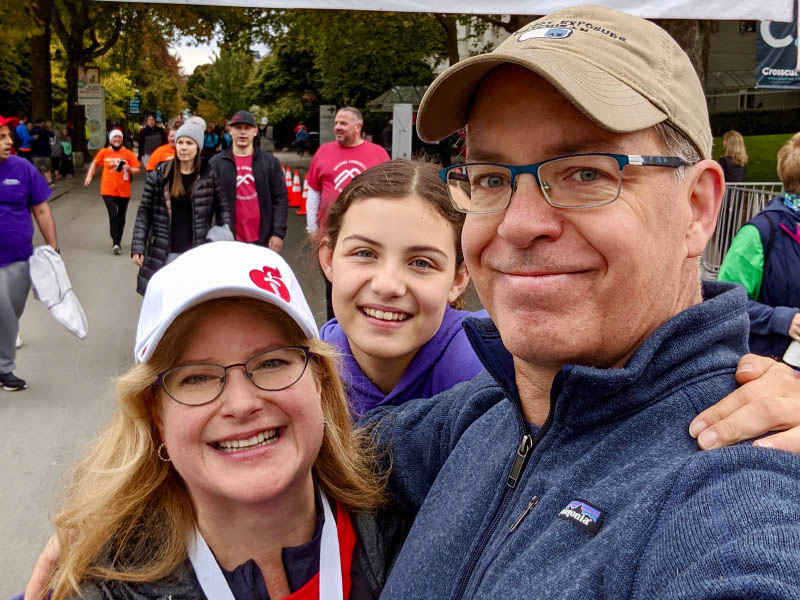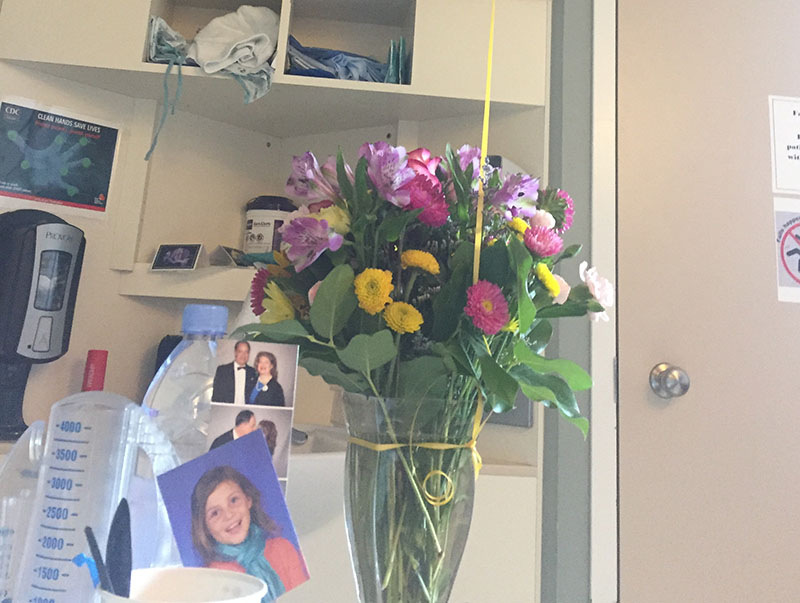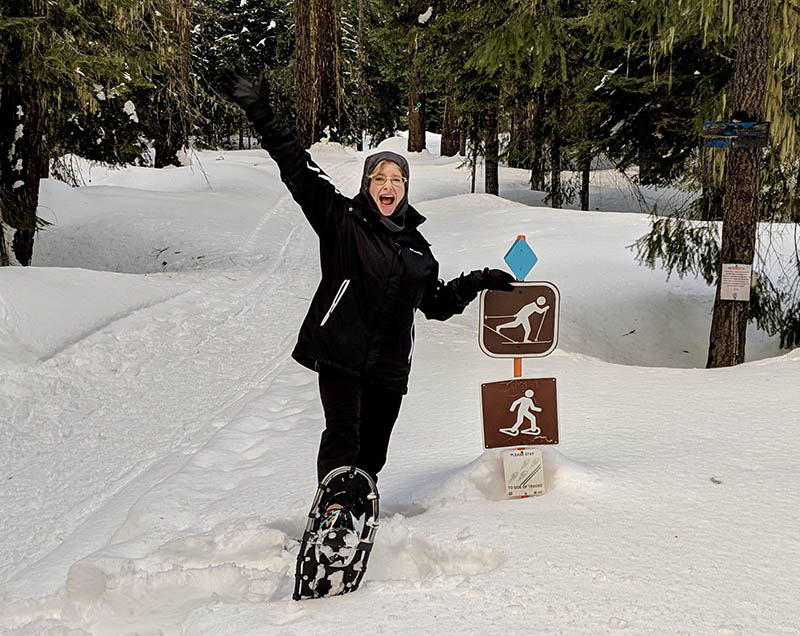47-year-old mom came home from a work trip and had two strokes
By Deborah Lynn Blumberg, American Heart Association News

After back-to-back work trips, Stephanie Gerding came home on a Saturday completely exhausted. She had a headache and neck pain, but she thought a good night's sleep was all she needed to bounce back.
In the middle of the night, she woke to use the bathroom.
"As soon as I got up, the world was tilted," said the Seattle-based small business owner and mother of one. "I knew something terrible was happening. I looked at my husband, and I told him to call 911."
Stephanie managed to get herself dressed, then collapsed into bed. Soon, firefighters arrived and rushed her to the nearby stroke hospital. Her husband, Patrick, and 10-year-old daughter, Madeline, joined her in the ER.
An MRI revealed Stephanie had two strokes due to a tear in her vertebral artery. That had stopped the oxygen supply to her brain.
For days, nurses woke Stephanie every 45 minutes for blood draws, various tests and to administer medications. She couldn't walk and could barely open her eyes. She wasn't sure she had the strength to recover.
Then, Patrick placed a school photo of Madeline beside her bed. Madeline had chosen her own outfit for the picture, complete with a bright turquoise scarf she proudly fastened around her neck.

"Just seeing her, I thought, 'I need to keep going,'" Stephanie said.
Patrick called it "an important driver" for her caregivers, too.
Desperate for uninterrupted sleep, Stephanie left the hospital after 10 days to recover at home. Her sister, Nicole, a nurse from Tennessee, came to help.
Stephanie and Patrick made a spreadsheet of her physical therapy exercises to keep her on track. Although she could barely use a walker at first, she set challenging goals for her recovery: Kayaking, then, once she did that, snowshoeing.
"I thought of things to do that could bring some joy to all of us," she said.

The February after her September stroke, Stephanie told Madeline she didn't think she'd be able to host her annual Valentine's Day party for their friends.
"She said, 'Seeing your friends makes you smile, smiling makes you happy, and happiness makes you heal,'" Stephanie said. So, Stephanie and her daughter donned matching sweatshirts decorated with hearts and threw the party. It was a huge success.
Stephanie also poured herself into work.
Two weeks after coming home from the hospital, she was back at work grading assignments for an online class she taught.
"I did a little at a time because I was exhausted," Stephanie said, adding that she had double vision and could only use one hand. "But that repetitive motion really helped me get the use of my hand back."
She also was determined to keep a commitment to make a presentation at a conference in March.
"I decided I was going to do it, and I did it," Stephanie said. "One person said it was the best workshop they'd ever taken."
The hardest part, she said, was coping with the initial pain and weakness and relearning how to walk. In the hospital, she didn't realize how long recovery would take. It took two years before she felt close to her pre-stroke self.

"But even now, I still have a lot of invisible problems," she said, explaining that she's dizzy when she walks and can't feel temperature on the right side of her body.
Her perseverance amazes Patrick.
"Whether it was fighting for that first step, or being back at work a few weeks in, or pushing to improve three-plus years later, she always moves forward," he said.
A year to the day after her stroke, Stephanie sat down to write a poem she titled "Closer to a Better Tomorrow" and posted it for friends and family on social media. Part of it read: A walker, a wheelchair, a cane. / Repetitions, isolation, staying home. / Wanting to give up. Yet, Hope. / Trying anything. Everything. / Using my spark to rise in fire. Inching closer to a better tomorrow.
Stories From the Heart chronicles the inspiring journeys of heart disease and stroke survivors, caregivers and advocates.
If you have questions or comments about this story, please email [email protected].





